Quo vadis, Everest?
The avalanche in the Khumbu Icefall on Good Friday could be a decisive turning point in the history of Mount Everest. For the first time since the start of commercial expeditions to the highest mountain in the world in the late 1980s there will be almost certainly no clients who reach the summit via the Nepalese south side this spring. The season is over, not officially, but de facto. All major expedition teams have left the base camp, many climbers have meanwhile arrived in Kathmandu. There are more and more reports about massive threats of a small group of Sherpas against those compatriots who wanted to stay on the mountain despite the avalanche disaster with 16 deaths. Western climbers were apparently threatened too.
![]() read more
read more
The gradual end of the Everest season in Nepal
The base camp on the Nepalese side of Mount Everest is getting empty. Government officials denied that the climbing season on the highest mountain in the world was officially ended. “The ones who want to leave will leave and those who want to continue climbing would not be stopped or threatened,” said Tourism Minister Bhim Acharya after a crisis meeting at the basecamp, where he had tried to convince the teams to continue the expeditions. The Sherpas had assured him that there would be no trouble, he said.
![]() read more
read more
Everest boycott or going on?
One crisis meeting leads to another, at Everest basecamp at 5300 meters as well as at the seat of the Nepalese government in Kathmandu. It is still unclear whether there will be attempts to climb the highest mountain in the world via the Nepalese south side this spring. “Most teams are leaving the basecamp. They are afraid that something will happen (many avalanches are still coming down), but also that other Sherpas could punish them for going on”, German reporter Juliane Moecklinghoff, who accompanies the blind Austrian climber Andy Holzer, writes in her Everest diary. “There have been several meetings among the various team leaders, Sirdars and Sherpas but it remains unclear what the final decision will be”, reports Eric Simonson of the expedition organizer International Mountain Guides (IMG). Since the avalanche in the Khumbu Icefall last Friday killed 16 Nepalis, all mountain activities have been resting.
![]() read more
read more
Shock and anger on Mount Everest
 “It‘s a tremendous shock to us all“, Dawa Steven Sherpa writes to me from the basecamp on the Nepalese side of Mount Everest. “My team was extremely lucky to miss the avalanche but we have all lost friends and family members in the avalanche.” As in the previous years the 30-year-old Nepalese is leading an “Eco Everest Expedition” which is combining business and ecology: clients are led to the 8850-meter-high summit, but the team is also collecting garbage and brings it down to the valley.
“It‘s a tremendous shock to us all“, Dawa Steven Sherpa writes to me from the basecamp on the Nepalese side of Mount Everest. “My team was extremely lucky to miss the avalanche but we have all lost friends and family members in the avalanche.” As in the previous years the 30-year-old Nepalese is leading an “Eco Everest Expedition” which is combining business and ecology: clients are led to the 8850-meter-high summit, but the team is also collecting garbage and brings it down to the valley.
It is still unclear when the climbing season on Everest will continue – and if at all. Alpine Ascents International (AAI) is the first of the big Everest players that has called off its expedition. “We have all agreed the best thing is to not continue this season’s climb, so that all can mourn the loss of family, friends and comrades in this unprecedented tragedy”, AAI writes on its website. Among the 16 avalanche victims of last Friday were five Sherpas working for AAI. They also supported the U.S. climber Joby Ogwyn, who planned to make the first wingsuit flight from the summit of Everest. Discovery Channel has meanwhile cancelled the live TV broadcast of the jump that was originally planned for 11 May. The team of Adventure Consultants that had lost three members in the avalanche has also decided to go home.
![]() read more
read more
Happy Easter!
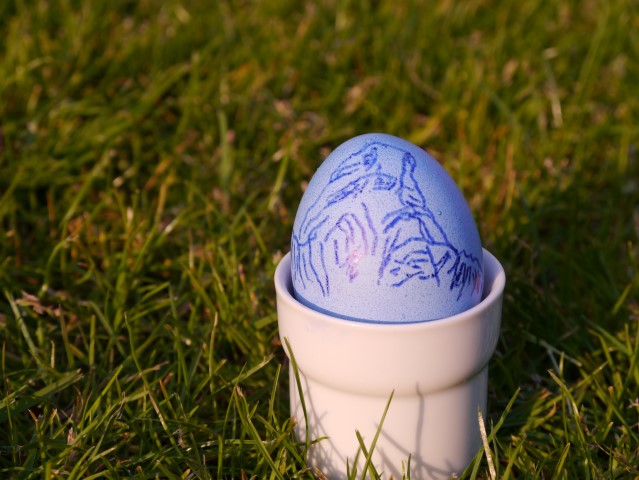 I wish you all a nice Easter weekend. And which mountain has the “Picasso from Cologne” conjured up to this Easter egg?
I wish you all a nice Easter weekend. And which mountain has the “Picasso from Cologne” conjured up to this Easter egg?
Death trap Khumbu Icefall
The very first climbers had respect for the Khumbu Icefall. This is underlined by the nicknames which the members of the successful British Everest expedition 1953 gave to the risky passages through the labyrinth of ice: “Hillary’s Horror”, “Mike’s Horror”, “Atom Bomb area”. The icefall was “the key to all attempts on the south side of Everest”, wrote Sir Edmund Hillary, the New Zealander, who, together with Sherpa Tenzing Norgay, stood first on the 8850-meter-high summit. Since then about 40 climbers, most of them Sherpas, were killed in the Khumbu Icefall by avalanches from the west shoulder or collapsing seracs. In recent years, high temperatures have even increased the danger of avalanches. For this reason, the New Zealand expedition organizer Russell Brice had abandoned his expedition in 2012.
No hope for missing climbers
The disaster on Friday was the worst in the history of Mount Everest. By now 13 dead bodies have been recovered from the ice and snow. There was no more hope to find the three still missing climbers alive, said a spokesman of the Ministry of Tourism. All victims are Nepalis, most belonged to the ethnic group of Sherpas. They all were carrying material and food from basecamp to the camp above the icefall, when they were hit by the ice avalanche. They had no chance to escape.
![]() read more
read more
At least twelve killed in avalanche on Everest
The spring season on Everest begins with a disaster. On the Nepalese south side of the mountain, an avalanche has hit the Khumbu Icefall. “Around 25 persons were swept away by the avalanche”, a spokesman of the Nepalese Ministry of Tourism said. “We have rescued eight alive, and 12 bodies have been recovered so far.” Four Sherpas were still missing. Climbers from six expeditions were caught in the avalanche. Due to other reports, all victims were Sherpas who were fixing the route route through the labyrinth of ice when the avalanche went off at an altitude of about 5800 meters.
The dangerous passage is called “popcorn field” because there are so many ice blocks of collapsed seracs or out of ice avalanches. This spring, some 300 climbers from 28 expeditions have pitched their tents on the south side of Mount Everest.
By now it is the worst avalanche disaster in the history of Mount Everest. In 1922, on the Tibetan north side of Mount Everest seven Sherpas were killed in an avalanche. In 1970 within days seven Sherpas lost their lives in the Khumbu Icefall.
Ralf Dujmovits: Mount Everest, take six!
How could the Portuguese explorer Fernando Magellan see so many campfires at the southern tip of South America in 1520 that he named the region “Tierra del Fuego”? Actually, the typical constant rain there should have extinguished any flame. During their expedition to Monte Sarmiento in Tierra del Fuego Gerlinde Kaltenbrunner, Ralf Dujmovits, Ralf Gantzhorn and Rainer Pircher had only two half days without rain. Furthermore wind speeds up to 150 kilometers per hour at a height of 1800 meters. Thus the plan failed to climb the main summit of the 2246-meter-high, pyramid-shaped mountain via the North Face. In addition to bad weather the team had bad luck. A snow cave at 1600 meters, where the climbers had deposited their gear during their first attempt, had disappeared, when they climbed up for the second time.
![]() read more
read more
Goettler is going to climb Mount Everest
That was a short home leave. Just one month after his return from Nanga Parbat David Goettler has packed his bags again. His goal this spring: Mount Everest. “To climb Everest via the normal route without supplemental oxygen is challenging enough. That would be interesting”, David had told me last August when I had asked him whether the highest mountain in the world was an attractive goal for him. Now the 35-year-old climber is putting this project into action. He wants to climb Everest via the normal route on the Nepalese south side of the mountain, David writes me while trekking from Lukla to Namche Bazaar. “Without bottled oxygen and high porters.” I want to know whether he is a member of a team. “I and 600 others … ;-)”, replies Goettler. “As a team, I have only myself !”
![]() read more
read more
Luis, last minute
In one point it is the same for mountaineers who want to climb an eight-thousander and for everyday travellers: Shortly before departure the dates are accumulating. They have to pave the way for their long absence in their jobs, meet friends and family and – last but not least – make the last preparations for the upcoming project. That applies to Luis Stitzinger, too. We met last weekend in Oberstdorf in the Alpes, the day before Luis’ departure to Nepal. The 45-year-old German and his wife Alix von Melle want to climb again Makalu, at the height of 8485 meters the fifth highest mountain in the world. In 2010, the couple had to turn back on 8050 meters at temperatures of minus 45 degrees Celsius. Alix and Luis have already climbed six eight-thousanders: Cho Oyu, Gasherbrum II, Nanga Parbat, Dhaulagiri, Broad Peak and Shishapangma, all without using bottled oxygen. This makes the 43-year-old Alix the most successful German women at the highest mountains in the world.
![]() read more
read more
Huber brothers try to climb Latok I North Face
2013 was an unusual year for Alexander Huber. The younger of the two Huber brothers was not on expedition, in contrast to his brother Thomas. Instead, the 45-year-old climber published a book (there is no English version yet), in which Alexander commits to fear as open as probably no climber did before. I met him at Leverkusen near my hometown of Cologne where he was holding a lecture.
Alexander, when will we see you on expedition again?
The next expedition is coming soon. By mid-June we will start to the Karakoram. Let’s see what will happen.
Do you reveal your plan?
![]() read more
read more



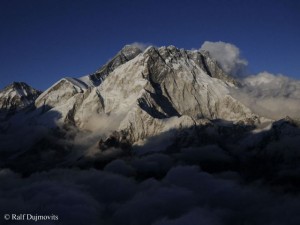

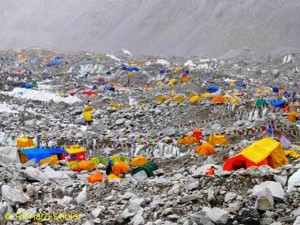
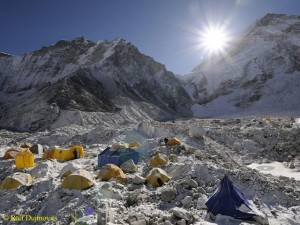
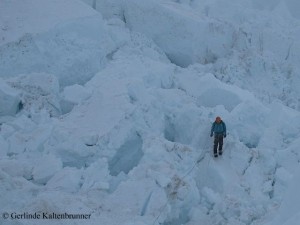
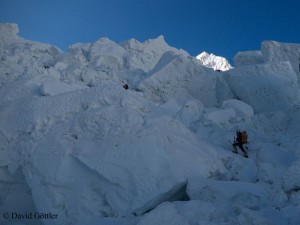
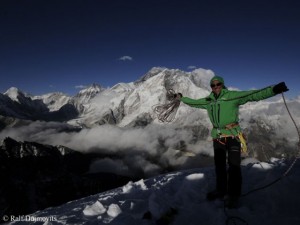
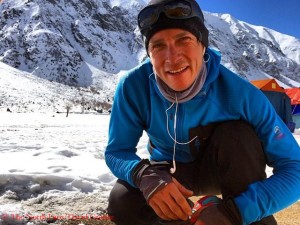
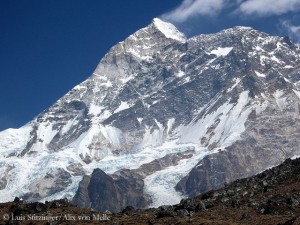


Feedback